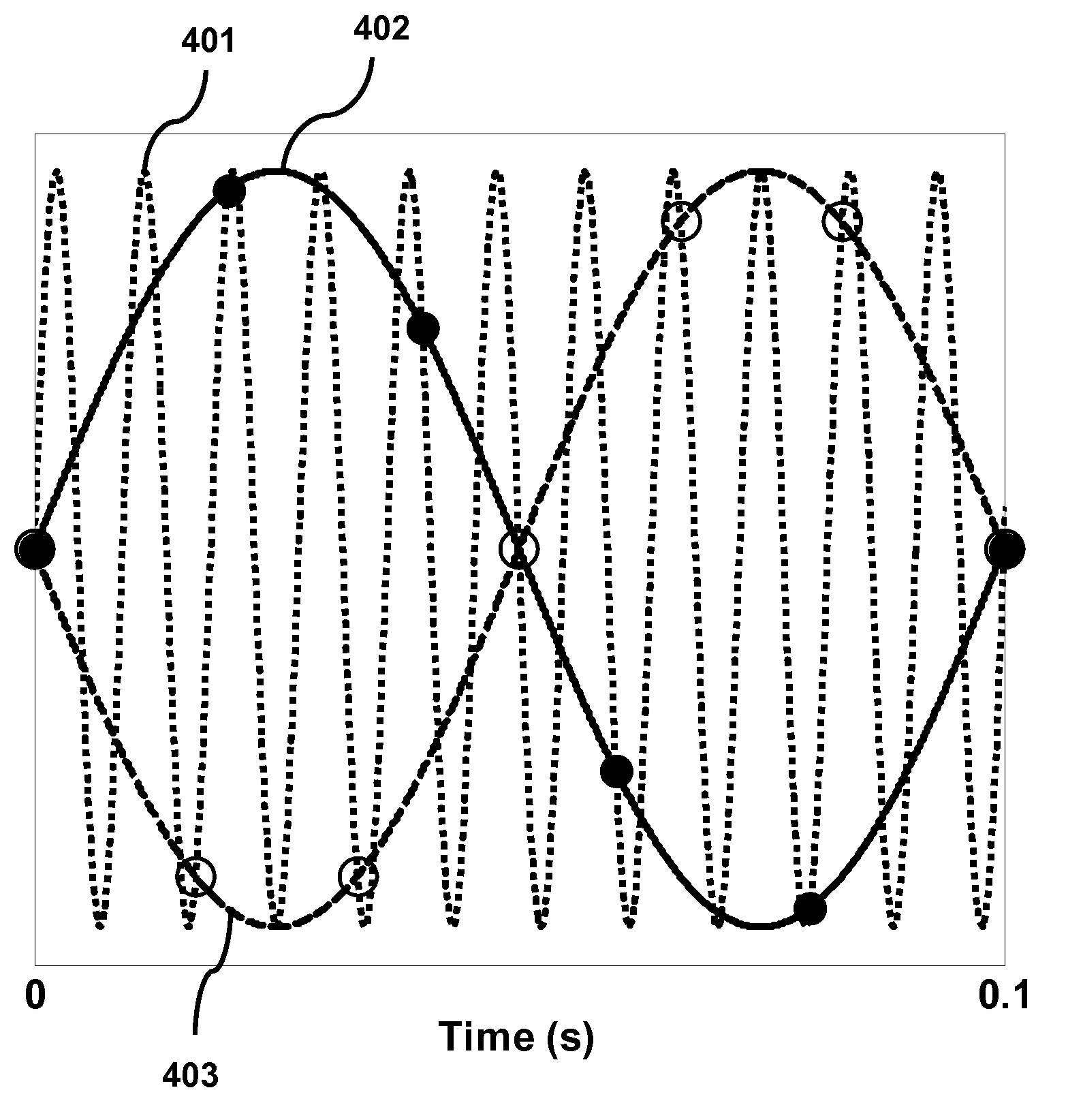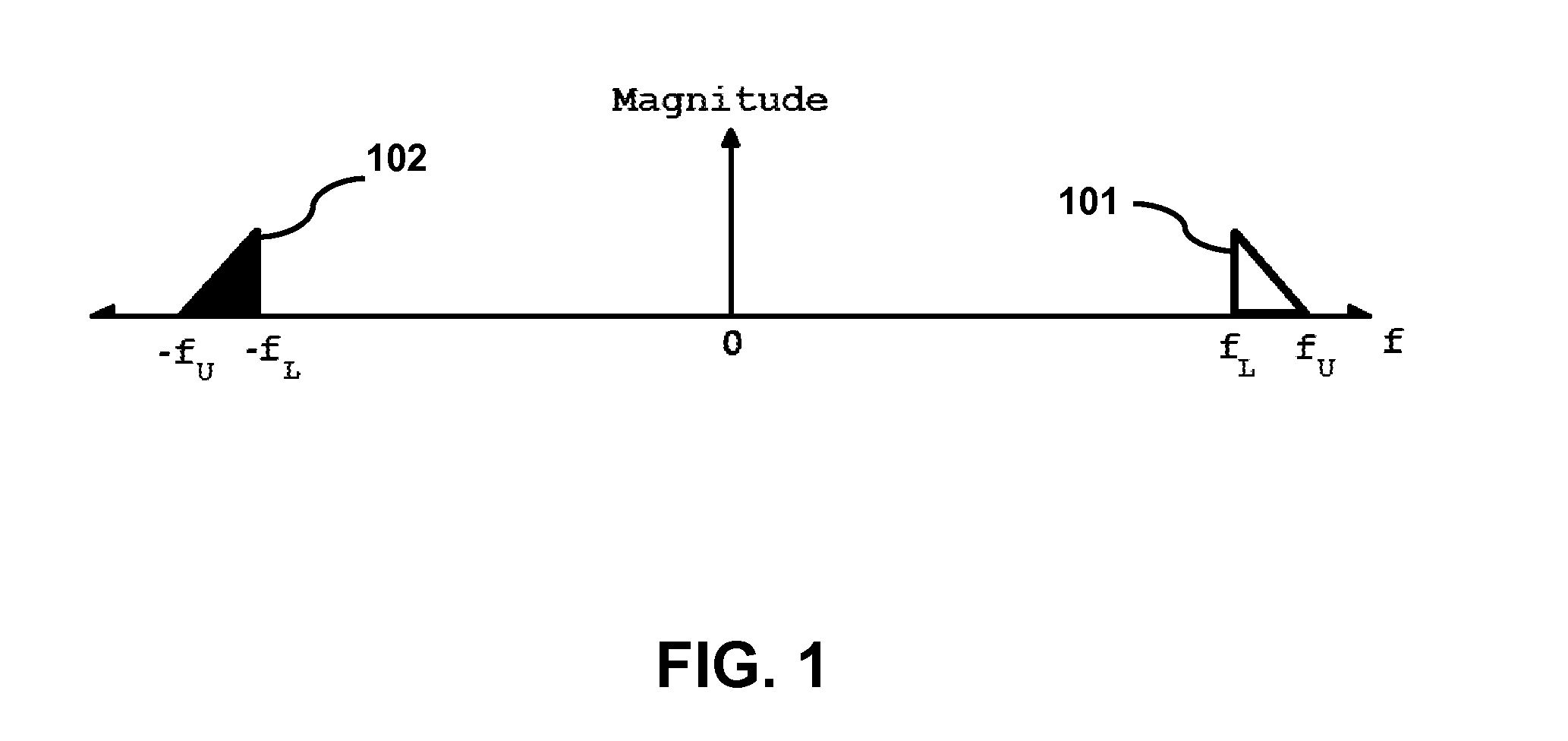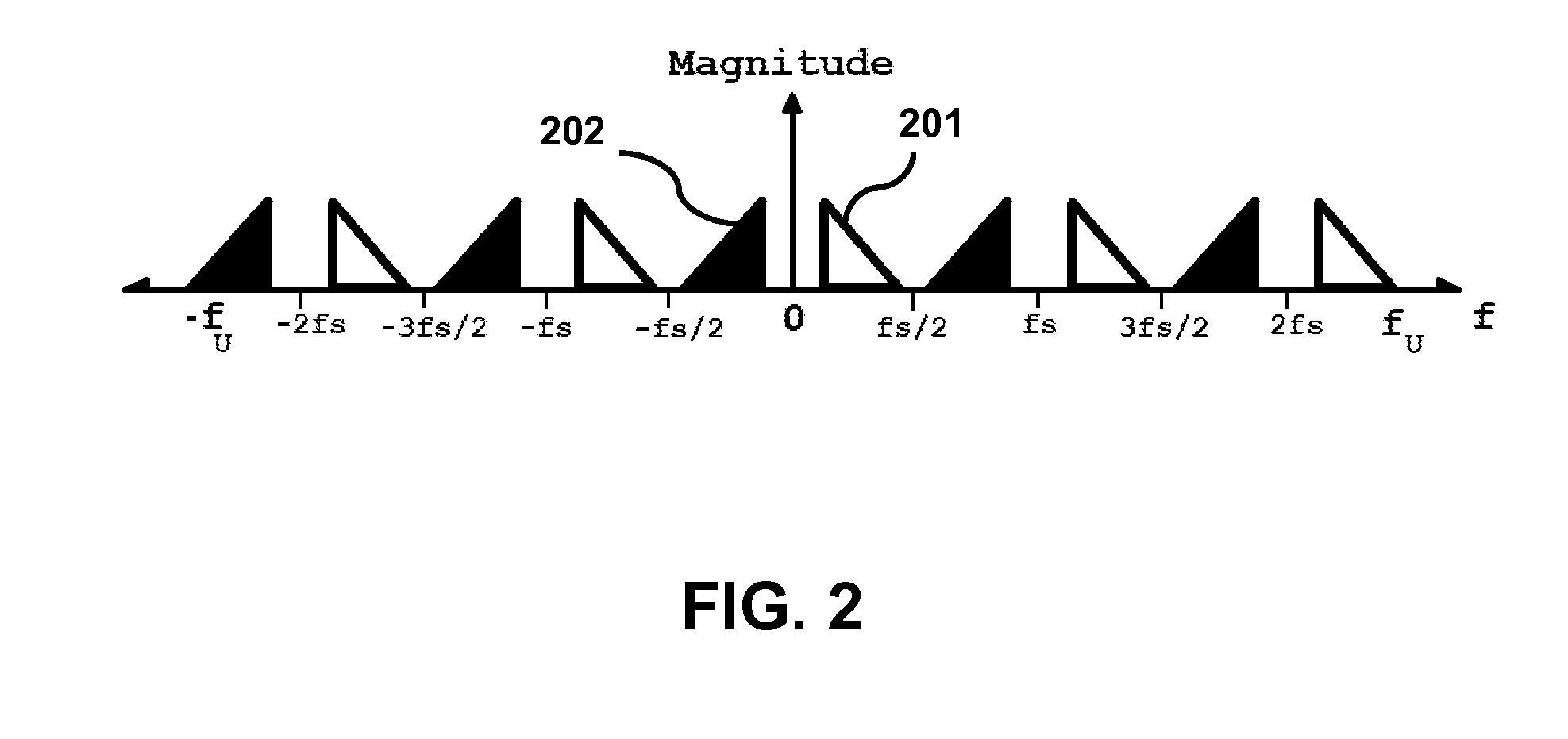Bandpass sampling for elastography
a bandpass sampling and elastography technology, applied in the field of high-frequency tissue motion imaging using bandpass sampling, can solve the problems of inability to provide quantitative estimates of viscoelastic parameters without accurate knowledge of boundary forces, small relative image acquisition frame rate, etc., to facilitate elasticity imaging of soft tissu
- Summary
- Abstract
- Description
- Claims
- Application Information
AI Technical Summary
Benefits of technology
Problems solved by technology
Method used
Image
Examples
Embodiment Construction
[0025]This invention comprises the use of bandpass sampling in dynamic elastography. Through using bandpass sampling, soft tissue can be characterized at frequencies that are even higher than the frame rate of the imaging device which can be an ultrasound or a magnetic resonance imaging machine. In one embodiment, this can be useful when a real-time map of the viscoelastic parameters (including elasticity or viscosity) at a relatively high frequency is desired. Due to the impracticality of demodulating the displacement data in imaging modalities such as ultrasound or magnetic resonance elastography, bandpass sampling can provide a means to image high frequency motion without having to change the conventional imaging settings. One inventive aspect of using bandpass sampling for elastography is that accurate synchronization with the excitation pulse is not required and also a multi-frequency or narrow-band excitation can also be applied. The correct choice of the sampling frequency th...
PUM
 Login to View More
Login to View More Abstract
Description
Claims
Application Information
 Login to View More
Login to View More - R&D
- Intellectual Property
- Life Sciences
- Materials
- Tech Scout
- Unparalleled Data Quality
- Higher Quality Content
- 60% Fewer Hallucinations
Browse by: Latest US Patents, China's latest patents, Technical Efficacy Thesaurus, Application Domain, Technology Topic, Popular Technical Reports.
© 2025 PatSnap. All rights reserved.Legal|Privacy policy|Modern Slavery Act Transparency Statement|Sitemap|About US| Contact US: help@patsnap.com



